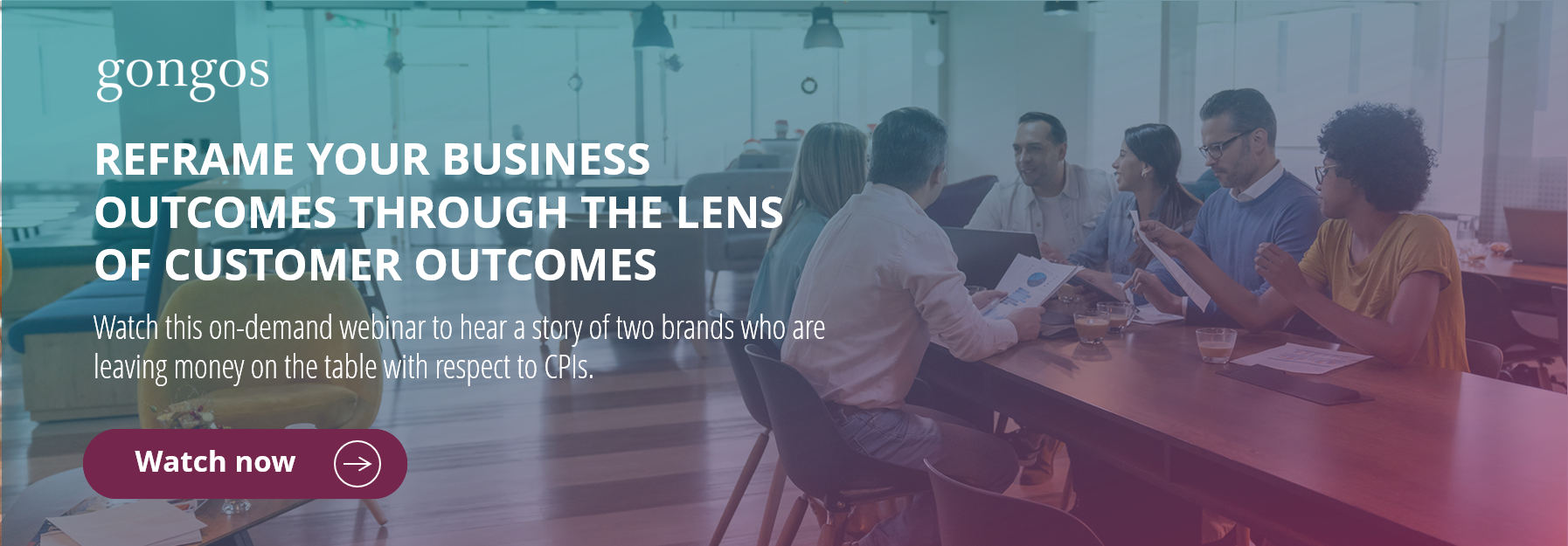By Camille Nicita, President & CEO, Gongos, Inc.
When it comes to upselling and loyalty programs, consumers live in a world full of rewards offers, frequent spending plans and other programmatic ways of building lifetime value. Rightfully so, as research shows that companies that lead in earning customer loyalty “grow revenues roughly 2.5 times as fast as their industry peers and deliver two to five times the shareholder returns.” Moreover, the global market for loyalty management sat right around $7.3 billion in 2020.
With such high investment and even higher customer expectations, there’s never been a better time for brands to understand what is most valuable to customers — but first, you must understand what value means to them beyond the notion of value for the money.
Instead of spending millions on one-sided programs that push product and frequency of purchase, I think brands ought to steer initiatives toward providing a more reciprocal value exchange to customers. And what better way to do that than aligning programs to help customers achieve the goals that are most important to them? To achieve this, you must first invest in understanding customers’ goals — through what Accenture Interactive calls Customer Performance Indicators (CPIs). Our consultancy has since built a patent-pending growth model based on customer goals — or CPIs.
Two Dimensions To Operationalizing Customer Centricity
Operationalizing customer centricity is no longer an enigma; we explored and mapped a combination of Andy Hines’ model of post-materialist consumerism and his global values method, as well as the Bain & Company value pyramid, to identify 15 universal CPIs that appeal to all customers regardless of brand affinity or product category. These CPIs go beyond needs as customers and dive deeper into emotional, social and functional needs as humans. After completing the task of evaluating which CPIs are most important to customers for individual brands, the two dimensions of operationalizing customer centricity become clearer: understanding and delivery.
- Understanding: It is important to take time to go beyond face value to unpack what each CPI means for your brand. Of course, CPI relevance will vary from brand to brand, and customer to customer. Even a similarly stated goal such as “saves me time” will be brought to life differently among brands. Ordering through the Starbucks app is quite a different kind of time-saving measure than a home insurance company claim that resolves itself in three weeks rather than four. So, a diagnostic model is essential to identify a CPI’s relevance for your brand and how it comes to life in unique ways for your customers.
- Delivery: Brands that truly operationalize customer centricity set the standard for brands across all industries by providing best-in-class execution. This means delivering on the goals that are most important to their customers better than anyone else and, more importantly, better than they did in the past. You can achieve this by aligning the appropriate resources and human capital with each goal and holding decision makers accountable for fueling continuous innovation against changing customer needs.
Juxtaposed against the typical model of “evaluate” our current customer experience and “repair” the items that aren’t satisfactory, the notion of delivering on customer-stated goals provides brands with a true opportunity to discover and build a value-led future with customer needs as the foundation.
Walking The Talk Of Customer Centricity
Beyond understanding customers’ goals and delivering on them, there are several common themes among customer-committed brands. Below are four actionable concepts that I’ve noticed have been adopted by leading companies to deliver on and champion true customer centricity.
- Measure up to customers, not industry-specific competitors. As Jeff Bezos so accurately stated, “If you’re competitor-focused, you have to wait until there is a competitor doing something. Being customer-focused allows you to be more pioneering.” These days, many customers no longer evaluate brands against other brands that provide similar products or services. Often their standard of excellence is industry-agnostic, and they expect the same level of experience from their local coffee shop as they do when booking a flight. Hold yourself accountable to your customers, not to your competitors, and of course not to your shareholders.
- Focus on customer-centric innovation. Customer-centric brands hone a relentless focus on delivering on customer needs and minimizing pain points with respect to innovating products, services and experiences. Approach innovation through a human-centered lens, and employ design thinking principles to find new and unexpected ways to deliver on customer needs.
- Invest in human capital. Optimizing organizational design and resources to elevate the customer experience is key. Organizations often find, through the development of a CX strategy, that their structure is not designed with the customer in mind. To implement these strategies, it is often necessary to revisit headcount, structure, roles, education and training to ensure that teams are set up for success in delivering on the desired experience.
- Translate customer-centered goals to frontline employees. The goal here is to create a company culture that is obsessed with the customer. You can achieve this by effectively and consistently articulating customer goals to frontline employees, so they can understand, believe in and help champion them through the customer experience.
What Leaders Can Learn
Oftentimes, leaders have good intentions when it comes to aligning with customer goals, but with business in general, the bottom line and operations can get in the way and offset insights that show you how to put customer-centric practices into play. It can feel like you’re helping one party while hurting another — like robbing Peter to pay Paul.
By using CPIs — and the notion of value exchange — as a decision filter and asking yourself, “Is where I’m investing in my business moving us closer to value creation for our customers, or not?” you can bridge the divide with the confidence to make empowered and strategic business decisions that will create more loyal customers and positively impact growth.
As published in Forbes.

